First and foremost, I always repeat these lines: Please avoid the use of chemical pesticides and fertilizers which have a lot of hazardous effects on humans and animals. That’s the main reason, why we promote the use of natural agents or organic pesticides and fertilizers in this gardening website.
What is Asafoetida?
Asafoetida, also known as hing, is a common flavoring agent found in most kitchens. It’s actually dried latex or gum exuded from the rhizome or tap root of Ferula Asafoetida plants.
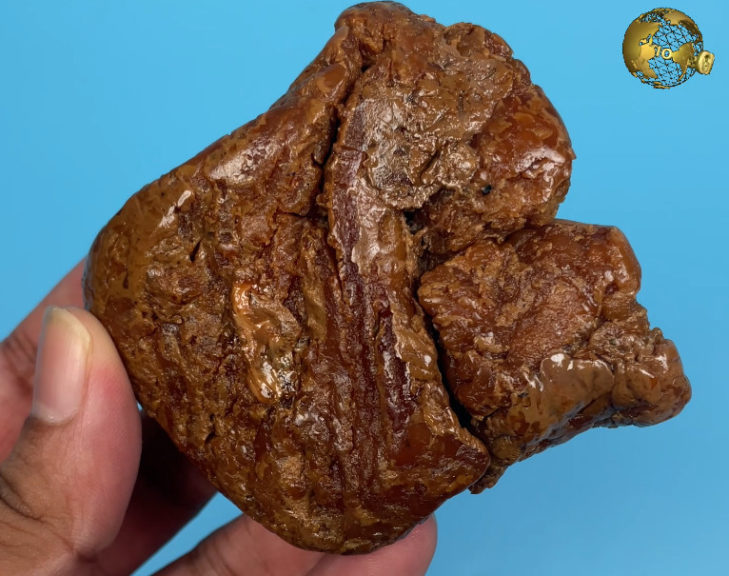
What is the Scientific Basis of its use in gardening and Farming?
First of all, let’s look into its composition. Typical asafoetida contains about 40–64% resin, 25% endogenous gum, 10–17% volatile oil, and 1.5–10% ash. The resin portion and the volatile oil portion contains a lot of strong compounds that are responsible for its pungent odor and its beneficial properties. Apart from it’s medicinal properties, Asafoetida has some amazing uses in gardening and farming as a pesticide to control many pests and insects including termites, also to repel rodents and animals from your garden or farm, and also to treat some plant diseases like leaf curl virus or leaf curl disease which otherwise has absolutely no treatment. We will look into how to use Asafoetida for each of these problems.
How to use Asafoetida to treat Leaf Curl Disease?
Take one liter of sour butter milk. You can also take 500 ml, if you have fewer plants.
Add one teaspoon or about 5 gms of Asafoetida powder to it and mix well.
Let it stay for 1 or 2 hours.
Sieve this solution using a fine cloth to avoid spray bottle clogging.
Spray this thoroughly over the affected plant including the underside of the leaves.
Repeat this every 3 days for 3 – 4 times. Leaf curl disease which is common in pepper and tomato plants will be completely cured by this treatment most of the times.

How to use Asafoetida to Repel Insects and Termites?
Take 50 gms of Asafoetida – raw cake form is better.
Put this in a piece of cotton cloth and make a small sac like this.
Hang this over the tree or plant where you want to repel unwanted insects including termites. The disagreeable odour repels termites and other insects.
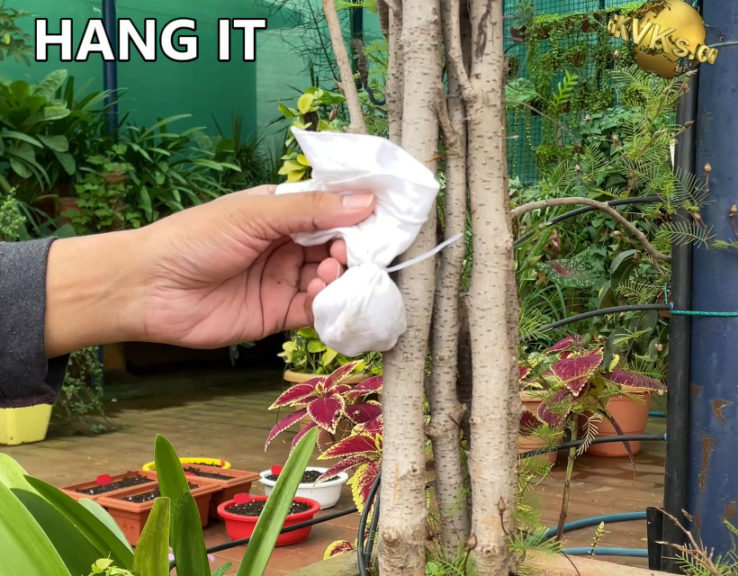
How to use Asafoetida to Repel Unwanted Animals and Rodents?
Sometimes these rodents and other animals including our pets like cats and dogs create havoc in our gardens. Most of these animals hate the strong pungent smell of asafoetida. To make it effective you need to use a lot of Asafoetida wrapped up in cotton cloth to repel these animals. Perhaps about 100 gms of Asafoetida may help protect and area of about 1 to 2 square meters. It may not be so much cost effective, but it depends on the intensity of your problem.
How to Use Asafoetida as an Organic Fertilizer and Why?
Using Asafoetida as a liquid fertilizer is said to boost plant immune system and protect it from various diseases in the long run.
- Add 2 grams of raw Asafoetida or pure powder form to 1 litre of water.
- Mix it well by stirring continuously.
- Then water your plants with this solution once in a while, preferably in early growth stages of the plant.
- You can also mix more of it per liter of water and then dilute the solution accordingly and water your plants once in a while.
- You can also foliar spray this solution over your plants.
How to use Asafoetida as an Organic Pesticide?
Asafoetida alone may not be effective to control common pests in our gardens like Aphids, mealybugs, whiteflies, thrips, mites and so on. But mixing this with other ingredients can make it a powerful natural pesticide to control these pests.
- Take 1 litre of water and add 5 gms of Asafoetida powder or cake form.
- Add Neem oil of about 5 ml.
- Mix it well and spray it on the affected plants once weekly.
Neem oil is a vegetable oil extracted from the Miracle Tree – that’s the Neem Tree. The botanical name of neem tree is Azadirachta indica. Azadirachtin and Nimbin found in neem oil are the two major compounds responsible for its antibacterial and antifungal actions.
This neem tree is native to the Indian subcontinent and can be easily grown at home gardening level even in large containers.
Before we discuss on which Neem oil you should purchase for best efficacy in gardening, we will list out the best uses of neem oil for your plants and gardening.
- Its Byfar the best Organic Pesticide available worldwide. It has an excellent safety profile and the best efficacy to treat a large number of pest attacks on your plants. It is infact a broad spectrum pesticide effective on pests like Aphids, Mealybugs, Whiteflies, Caterpillars,leaf miners, fungus gnats, Thrips and mites, Greenflies, Grasshoppers and other Scale insects. It kills pests in all their lifecyle stages like the adult stage or the larval stage.
- It has the Anti bacterial, anti viral and anti fungal properties not only for use on plants but also prescribed for humans and pets for various skin and hair problems.
- Its also effective on Slugs and snails which eat away a lot of your garden overnight. I have an important episode to identify some hidden pests and insects in garden by examining the leaf signature they leave after feeding on the leaves. You can watch that episode from a link in the video description or from an end screen.
- It highly Effective in the Treatment of Black spot Rose disease, Rose die back disease and Powdery mildew. We have detailed episodes on each of these plant diseases and problems. You can watch those episodes from the description links.
- Neem cake is an excellent organic fertilizer for your plants. Neem cake is the by-product left over after the process of extraction of neem oil from neem seeds or neem fruits. Its not only a source of NPK and micro nutrients for plant growth, but when mixed with soil acts as a soil conditioner and also antibacterial and antifungal. You can avoid fungus gnats if you incorporate about 10 percent neem cake powder in your potting mix.
- last but not the least is, unlike the chemical pesticides, It does not affect the beneficial pollinators like butterflies and honey bees which are so important for a fruitful gardening.
Now, we will discuss the most important aspect of this video, based on which the quality, composition and efficacy of neem oil depends – that’s the method of extraction of neem oil from seeds.
There are three methods:
- Heat Pressing method.
- Solvent extraction method and
- Cold Press method.
Heat pressing method – as the name implies, its using heat for crushing or pressing the seeds to extract oil.
Solvent extraction means using a solvent like alcohol is used to extract neem oil. This solvent extracted neem oil usually has a low price, because it is turbid and contains a significant amount of water and metals with low content of the important compounds namely azhadiractin and nimbin.
Heat extracted neem oil also has moderate loss of the useful compounds and less effective.
Whereas the Cold pressed Neem oil extracted without applying any heat, is the best and effective source for neem oil. So, when you are purchasing from a local garden store or online, make sure you check the method of extraction mentioned on the bottle or product description. You can purchase cold pressed neem oil here.
How to use Neem oil properly for the best effects?
Before I start with the neem oil recipes for plants, the safety profile of neem oil. It has few effects when concentrated form is ingested like stomach irritation causing gastritis and vomiting. Then Eye irritation and contact dermatitis can develop on contact specially in children. Otherwise it has an excellent safety profile and its completely biodegradable.
Now the recipe for Neem Oil you can make at Home.
Before this, few important points you must remember:
- Because it’s an oil, it doesn’t mix well with water and must be mixed with some kind of surfactant like liquid soap or even shampoo for proper mixing and the coating effect on the plant leaves.
- Make sure you do not spray neem oil during the sunlight – best time to spray is in evenings after the sun fades.
To Make the best broad spectrum PESTICIDE FOLIAR SPRAY FORMULATION for 1 litre:
Take 1 litre Warm Water and add 10 drops of liquid soap like your handwash or
even some shampoo. Then you add 5 ml to
10 ml of Neem oil into this. 5 ml if you want to spray as a maintenance
pesticide spray for your garden where you do not have much pests.
10 ml if you have lot of pests on your plants.
Mixing this thoroughly before use is very important.
Perform a PATCH TEST to know how strong it is. This means you Just spray this
on one or two leaves and then wait for a couple of hours to see if the leaf is
wilting or burning due to too much concentration of neem oil. If you pass the
patch test, you can spray it on your whole garden safely. Patch test may be
important for newbie gardeners or if you have purchased a new brand of neem oil
from some company for the first time.
Also make sure you spray the underside of the leaves as well.
- How frequently should I use neem oil? Depending on the severity of pests, use it twice a week for pest eradication phase and then weekly once for 1 or two months and finally if everything is clean use it once every 15 days as a preventive measure.
Happy Gardening!
]]>How would you feel, when oneday on your early morning garden inspection you find part of your garden disappeared while you slept, or realize your flower buds are torn apart and very badly damaged?
I am sure after seeing this damage, Your first instinct is likely to spray some powerful chemical pesticide all over your plants to kill those culprits without even investigating further. This is not a right decision. Please Spend a little time to find out what’s eating your plants and then take necessary action particularly prescribed for that pest or insect.
Yes, Today we will look into Identifying those common pests by scanning their leaf signatures – that’s the leaf damage pattern they leave after feeding on your plants. So lets begin.
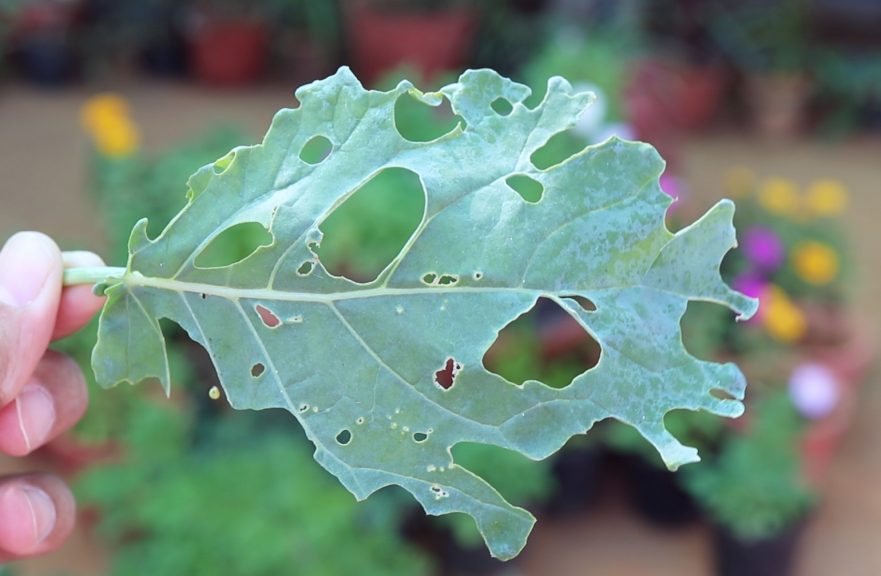
Chewed Leaves or Slime Trails
- Chewed Leaves or Slime Trails: If you seeirregular-shaped holes in the leaf (but not along the edges) and if you seeslime trails or lines, then most likely the Culprits are Slugs and Snails. So Whats the Solution? There are lot ofremedies for slugs and snails but Beer Trap is the most effective oneconsidered by many. Pour some beer in a saucer and leave it overnight. Thisattracts and kills these creatures. Chewed Leaves along the edges: Leafcutting bees are the culprits. So whats the solution? Generally unless its tooextensive damage, you need not take any step to kill or drive away these bees,because they are beneficial insects and required for pollination in yourgarden.
- Chewed Leaves with central holes in betweenveins – like Skeletonised leaves. The culprit here is Caterpillars if largerholes, then the other insects which can cause this pattern are Beetles, Earwigsand Saw flies. So whats the remedy. For caterpillars, hand pick and eliminatethem including their eggs from the leaves. After doing this apply a neem oil +soap solution weekly twice. 10 ml neem oil + 10 drops or 10 ml of liquid soapor shampoo and spray it thoroughly including the undersides of the leaves.
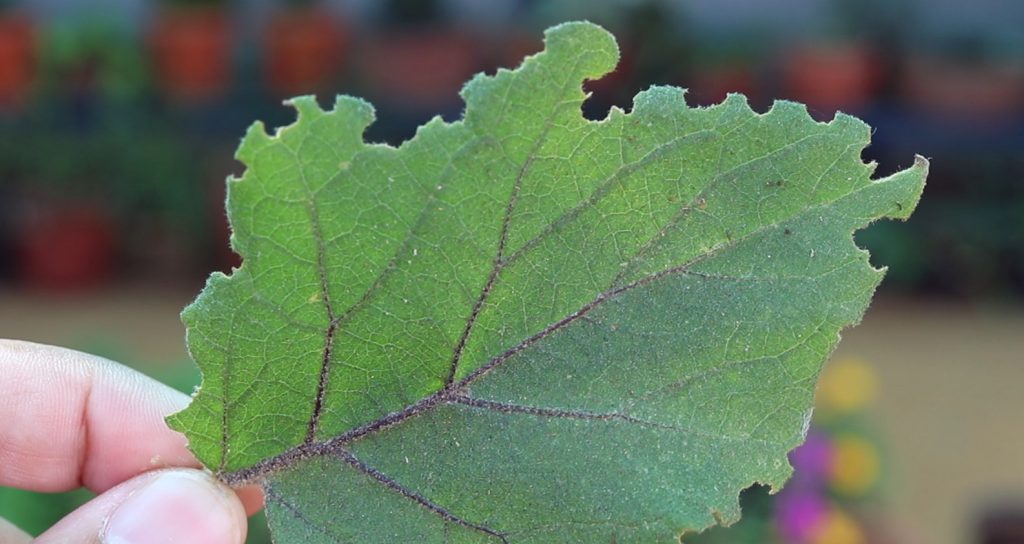
Skeletonised leaves
Discolored Leaves + Sucking Damage: Thisis commonly caused by Thrips and Spider Mites, common thrips are the CubanLaurel Thrips. As you can see here, the leaf is discoloured and then foldedonto itself to form a pouch or cover these creatures and its eggs. If leftuntreated, these thrips will multiply drastically and can cause a considerabledamage to your plant. So Whats thesolution? You can use the same Neem oil + soap spray weekly twice or can addanother oil like clove oil or eucalyptus oil if they are too extensive. If theystill persist, then go for a chemical sprays like those containing Imidaclopridas the last resort. If you still want organic solution like me, consideranother option called diatomaceous earth (DE).
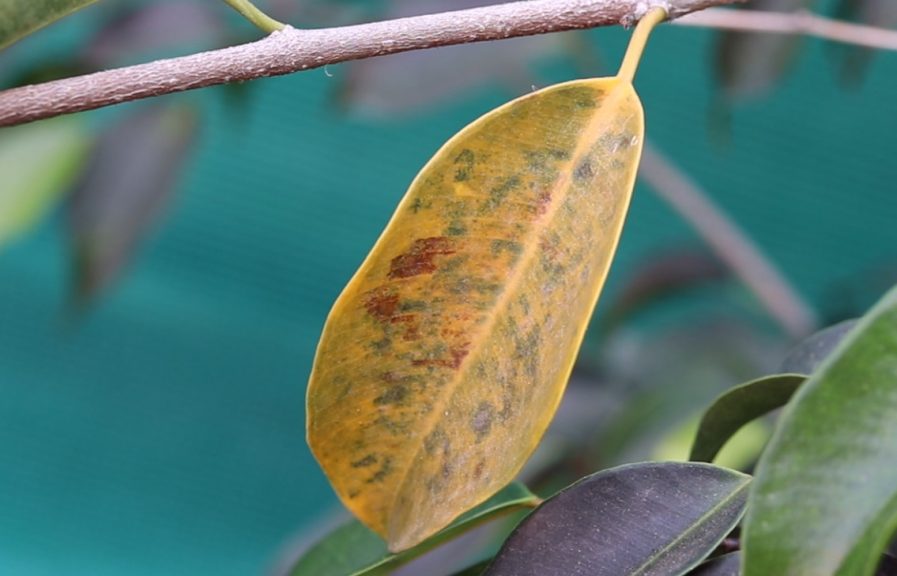
Zig zag leaf mining Pattern: Obviouslythese are called Leaf miners. Leafminers are very tiny larvae of a variety ofinsects like flies, moths and beetles. Leafminers do not actually cause majorinjury to the infested plant, but rather give an unattractive look to theplant. This mining pattern of zig zag lines on the leaves are produced as thesetiny larvae burry and eat along the infested leaves. If you want to control these, Neem oil is thebest solution. You can watch my detailed video on leaf miners and its remediesfrom HERE.
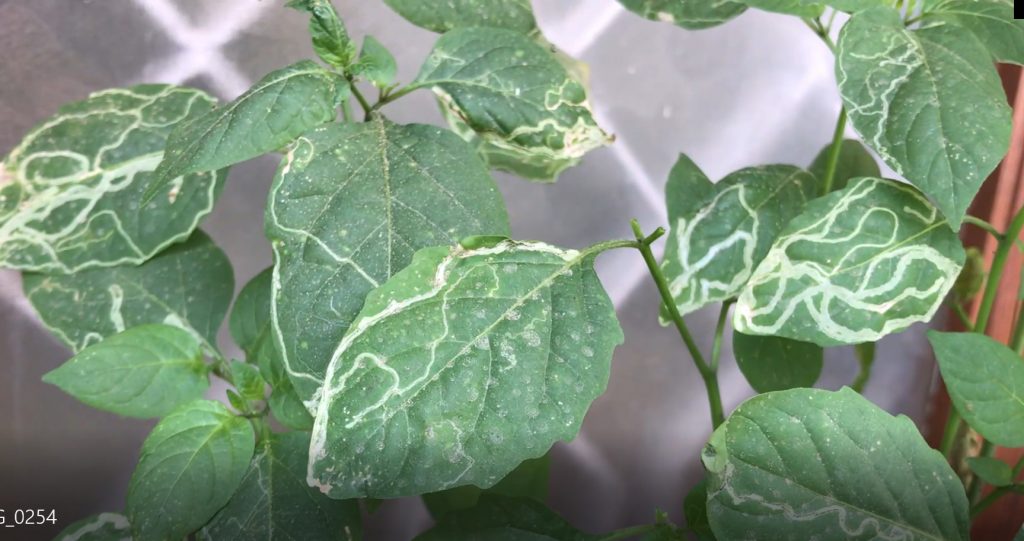
Sucking Damage and Deformed Leaves and Leaf Curls: Common Sucking pests are Aphids,Whiteflies and Mealy Bugs. The mealy bugs are very common and are found suckingthe new growth and tips. Infact, Mealybugs as well as Aphids have a symbioticrelationship with Ants which protect these pests from predators and also carrythem to the plants. The Ants in turn get the honeydew sugars excreted out oftheir anus as their gift. So, Whats the Solution? I have been using theMagic organic mix containing multiple ingredients along with neem oil tocontrol these. But they need a weekly spray with this solution depending on theseverity. There are lot of solutions to these pests including alcohol basedsprays, neem oil and many others. Please check a video on this topic HERE.

Leaf Galls or Leaf Bumps: This is astrange and rare pattern which presents as tumour like boils on the leafsurface. This is considered to be due to irritation or stimulation of plantcells due to feeding or egg-laying by insects such as aphids, wasps and mites.

